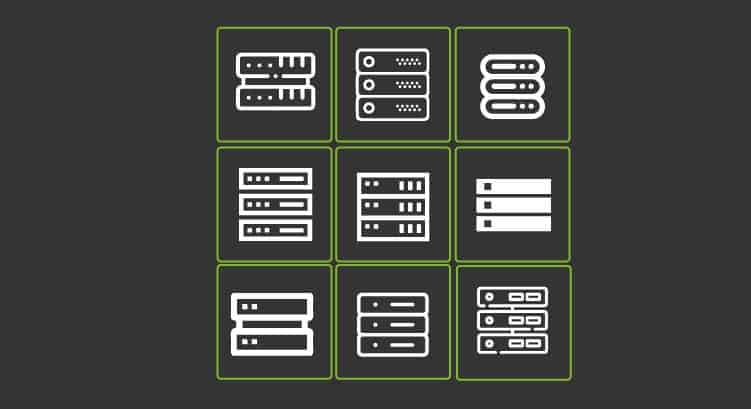Server types; Let’s have a look at some of them and their functions
How many server types are out there? The answer to this question, like so many others, is: “It depends”. Since there can be as many types of server as a company needs, and companies have more IT needs every day, so…
If we go to the definition of server we find that this is a computer that provides service to other computers that are part of a network. So from this simple concept we can find two things: 1) Servers will always be part of a network and 2) They are service providers (hence their name).
So, when it comes to categorizing server types, we find that there can be as many different classes as services which offer these to a network.
In this article we are going to make a small effort, listing some of the most common server types, briefly describing what their main functions are. Let’s go!
8 server types
-Web server: this is probably the type of server that will sound most familiar to you. The web servers are in charge of storing and facilitating the content of the web pages to which we access every day full of joy and emotion. This includes HTML documents, texts, images, etc.
-Mail server: it is one of the best known and most common. It is dedicated to storing, sending, distributing and, in short, carrying out all kinds of operations that allow us to offer an e-mail service to our clients. If you receive an email from your aunt Claire asking you what you want to eat on Sunday, it probably comes from a mail server.
-Database server: A must at the professional level. Database servers store and serve data to customers who need to make use of them. Remember that data is a sensitive and important subject for companies and institutions, so they tend to look after this type of server.
-Security server: it is the one that keeps antivirus, firewalls and, in short, all type of software destined to fight against malware. It’s something like the headquarters that hosts the special services that will deal with malicious attacks.
-Print server: less “glamorous” than other server types, but it does its job. To control and distribute the print jobs among the different printers that are part of the network. A job that will not give them fame or fortune, but that is still necessary in some areas.
-Telephony server: it is responsible for managing operations related to telephone services, such as the distribution of calls or the recording and storage of answering machine messages. If instead of sending you an email your aunt Claire calls you by phone, it is possible that her message will be saved in this type of server.
-Proxy server: this is a server that acts as an intermediary between the requests made by one client to another server. It serves several functions, such as performance improvement or access control.
-DNS server: they are in charge of managing the web domain names, communicating the requests of the users with the IP addresses -of a web server- in which the pages are hosted. That is to say, they allow that, when you type https://pandorafms.com/es in your navigator you go to stop our page and not to the one of an amateur gentleman to the extreme cross stitch, for example.
These are 8 of the most common server types, but the truth is that there are many others, such as FTP servers, chat servers, SIP servers, Telnet servers, and so on. As we said, we can find many types.
As you can imagine, servers are essential for many businesses. They are usually much more powerful than a standard desktop computer and the importance of the services they provide often forces them to operate 24 hours a day, 7 days a week.
What happens if a server “goes down”? You can depend on the services I provide, but this can be a real disaster. If you want to know more you can click on this article in which we talk about the causes and damages that can cause the fall of a server.
What can you do to prevent it from falling? Well, one of the things that can help you the most is monitoring.
Server Monitoring
Monitoring systems are responsible for monitoring technology (hardware, networks and communications, operating systems or applications, for example) in order to analyse its operation and performance, and to detect and warn about possible errors. And this leads us to Pandora FMS.
Among the many things that Pandora FMS can monitor, of course there is also server monitoring. Want to know more? Click here.
Or you can also send any query you may have about Pandora FMS. You can do this in a very simple way, thanks to the contact form that can be found at the following address.
Keep in mind that Pandora FMS is a flexible monitoring software to monitor devices, infrastructures, applications, services and business processes, so it can help you in many other monitoring tasks.
Finally, remember that if your monitoring requirements are reduced you can use Pandora FMS OpenSource version. Find more information here.
Do not hesitate to send your questions. The team behind Pandora FMS will be delighted to help you!
Pandora FMS’s editorial team is made up of a group of writers and IT professionals with one thing in common: their passion for computer system monitoring. Pandora FMS’s editorial team is made up of a group of writers and IT professionals with one thing in common: their passion for computer system monitoring.


















